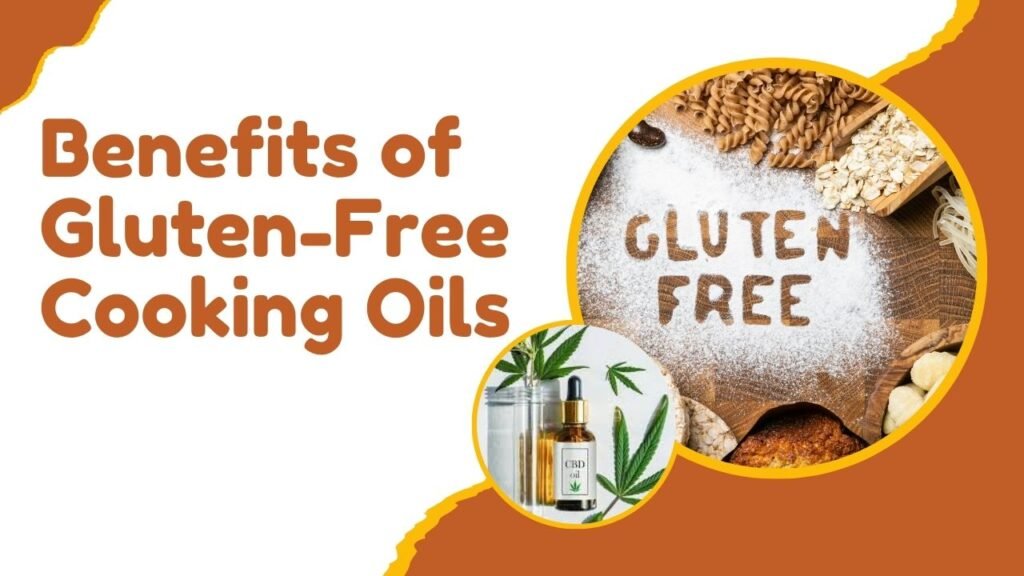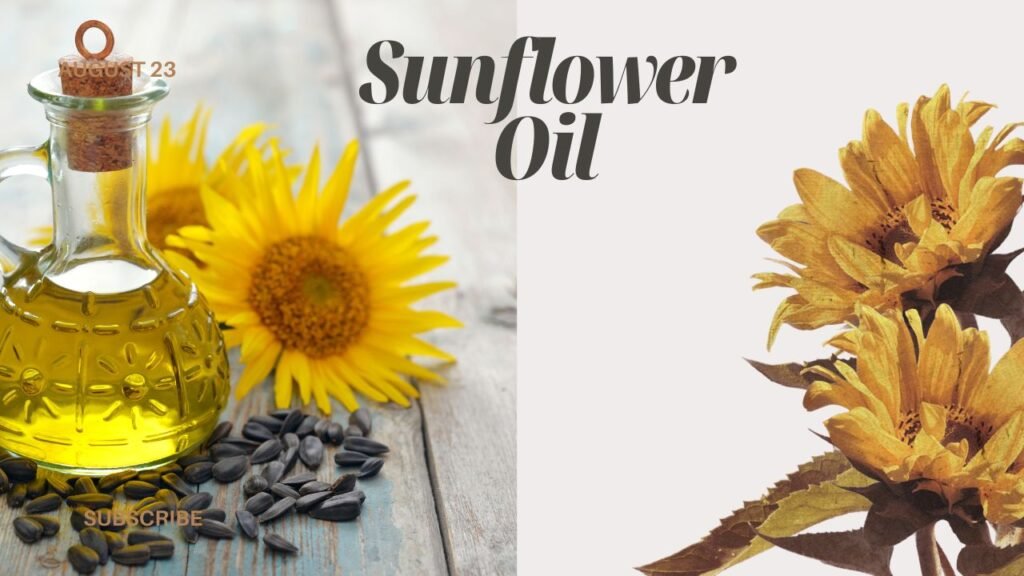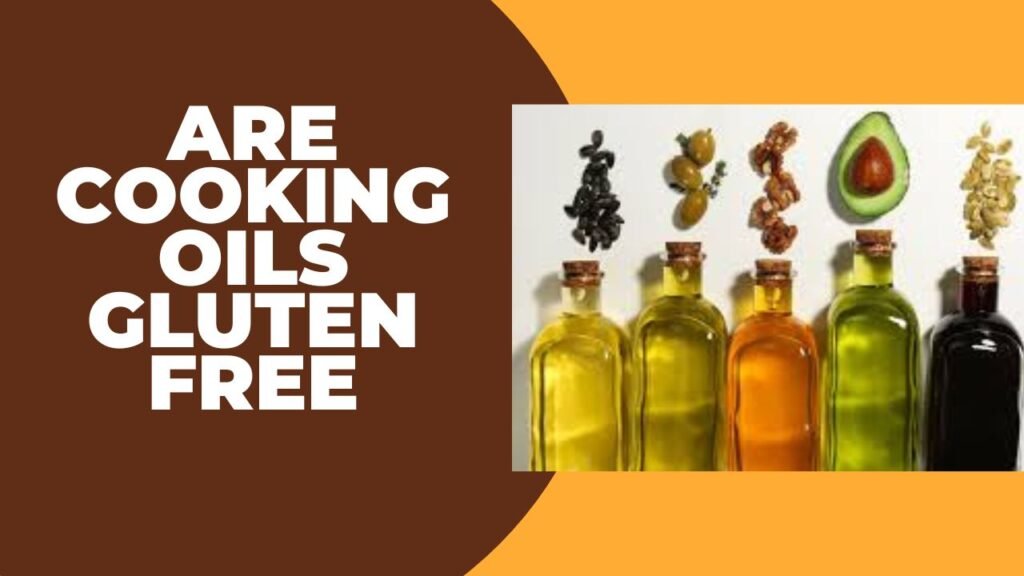Imagine preparing your favorite dish, only to discover that an unexpected ingredient is sabotaging your gluten-free diet. Are cooking oils gluten free? This is a common question for those managing gluten sensitivities or celiac disease. With a myriad of cooking oils available on the market, understanding their gluten content is crucial for maintaining a healthy and safe diet. Let’s dive into the world of cooking oils to uncover which ones are truly gluten-free and how to navigate your choices with confidence.
Understanding Gluten and Its Sources
What is Gluten?
Gluten is a group of proteins found primarily in wheat, barley, and rye. It gives dough its elasticity and helps it rise and maintain its shape. While gluten is harmless for most people, it can cause severe health issues for those with celiac disease, non-celiac gluten sensitivity, or wheat allergies.
Sources of Gluten in Cooking
While gluten is commonly associated with bread, pasta, and baked goods, it can also appear in less obvious places, including some cooking oils. Gluten can be present in cooking oils through:
- Additives and Flavorings: Some oils are flavored or contain additives that may include gluten.
- Cross-Contamination: Oils processed in facilities that handle gluten-containing products may become contaminated.
Understanding these sources helps in identifying which cooking oils to avoid or choose carefully.
Are Cooking Oils Gluten Free?
The Basics
In their pure form, most cooking oils are naturally gluten-free. Oils derived from plants, such as olive, canola, sunflower, and coconut oils, do not contain gluten. However, the processing and packaging of these oils can introduce gluten, making it essential to verify their gluten-free status.
Table: Gluten-Free Status of Common Cooking Oils
| Cooking Oil | Gluten-Free? | Notes |
|---|---|---|
| Olive Oil | Yes | Ensure it’s pure without added flavorings |
| Canola Oil | Yes | Typically gluten-free, check for additives |
| Sunflower Oil | Yes | Generally safe, verify no cross-contamination |
| Coconut Oil | Yes | Naturally gluten-free, watch for flavored varieties |
| Vegetable Oil | Yes | Depends on the blend, read labels carefully |
| Peanut Oil | Yes | Pure peanut oil is gluten-free, watch for blends |
| Sesame Oil | Yes | Pure sesame oil is safe, flavored versions may contain gluten |
| Avocado Oil | Yes | Naturally gluten-free, ensure no additives |
| Rice Bran Oil | Yes | Typically safe, verify processing methods |
| Grapeseed Oil | Yes | Generally gluten-free, check for cross-contamination |
Note: While the oils listed are generally gluten-free, always check labels for any hidden gluten-containing ingredients or potential cross-contamination warnings.
How to Ensure Cooking Oils are Gluten Free
Reading Labels Carefully
The most straightforward way to confirm if a cooking oil is gluten-free is by reading the label. Look for:
- Ingredient List: Ensure the oil is 100% pure without any additives or flavorings that may contain gluten.
- Allergen Statements: Some oils might state if they are processed in facilities that handle gluten.
- Certified Gluten-Free: Look for certifications from reputable organizations that verify the product is gluten-free.
Understanding Processing Practices
Even if an oil is naturally gluten-free, the processing methods can introduce gluten. For example, some oils might be processed using equipment that also handles gluten-containing products. Look for:
- Dedicated Facilities: Oils processed in dedicated gluten-free facilities are less likely to be contaminated.
- Refining Processes: Highly refined oils are typically safer as the refining process can remove most gluten residues.
Certifications to Look For
Certifications can provide an extra layer of assurance that the cooking oil is gluten-free. Look for:
- Gluten-Free Certification: Symbols from organizations like the Gluten-Free Certification Organization (GFCO).
- Non-GMO Project Verified: While not directly related to gluten, it indicates a higher standard of production.
- Organic Certifications: Often come with stringent processing standards that can reduce contamination risks.

Benefits of Gluten-Free Cooking Oils
Health Benefits Beyond Gluten-Free Status
Choosing gluten-free cooking oils can contribute to overall health and well-being:
- Heart Health: Many gluten-free oils like olive, canola, and avocado oil are rich in monounsaturated and polyunsaturated fats, which are beneficial for heart health.
- Antioxidants: Oils such as extra virgin olive oil contain antioxidants that help fight inflammation and oxidative stress.
- Versatility in Cooking: Gluten-free oils are versatile and can be used in a variety of cooking methods without worrying about hidden gluten.
Reducing Risk of Gluten Exposure
For individuals with celiac disease or gluten sensitivity, using confirmed gluten-free cooking oils minimizes the risk of accidental gluten ingestion, which can lead to severe health consequences.
Common Myths and Misconceptions
Myth 1: All Cooking Oils Are Gluten-Free
Fact: While most pure cooking oils are naturally gluten-free, processed or flavored oils may contain gluten through additives or cross-contamination.
Myth 2: Olive Oil Always Contains Gluten
Fact: Pure olive oil does not contain gluten. However, flavored varieties or those mixed with other ingredients might.
Myth 3: If an Oil Isn’t Labeled Gluten-Free, It Contains Gluten
Fact: Not all oils need to be labeled gluten-free if they don’t contain gluten. However, lack of a gluten-free label means you need to verify through other means.
Myth 4: Cooking Oils Can’t Cause Gluten Exposure
Fact: While unlikely, oils can be contaminated with gluten if processed in facilities that handle gluten-containing products.
Table: Myths vs. Facts About Gluten in Cooking Oils
| Myth | Fact |
|---|---|
| All cooking oils are gluten-free | Most pure oils are gluten-free, but processed/flavored oils may contain gluten |
| Olive oil always contains gluten | Pure olive oil does not contain gluten; flavored varieties might |
| If not labeled gluten-free, it contains gluten | Not necessarily; you need to verify through other means |
| Cooking oils can’t cause gluten exposure | Possible through cross-contamination during processing |
Types of Cooking Oils and Their Gluten-Free Status
1. Olive Oil
Status: Gluten-Free
Details: Pure olive oil, including extra virgin and virgin, is naturally gluten-free. However, flavored or blended varieties may contain gluten through added ingredients.
2. Canola Oil
Status: Gluten-Free
Details: Canola oil is typically gluten-free, but always check for any added flavors or potential cross-contamination.

3. Sunflower Oil
Status: Gluten-Free
Details: Sunflower oil is naturally gluten-free and versatile for various cooking methods. Ensure it’s pure and free from additives.
4. Coconut Oil
Status: Gluten-Free
Details: Pure coconut oil is gluten-free, but flavored or processed varieties might have additives that contain gluten.
5. Peanut Oil
Status: Gluten-Free
Details: Pure peanut oil is gluten-free. However, if it’s flavored or used in facilities handling gluten, cross-contamination is possible.
6. Sesame Oil
Status: Gluten-Free
Details: Pure sesame oil is gluten-free, but some flavored versions or those mixed with other oils may contain gluten.
7. Avocado Oil
Status: Gluten-Free
Details: Avocado oil is naturally gluten-free and excellent for high-heat cooking. Always verify purity and processing methods.
8. Grapeseed Oil
Status: Gluten-Free
Details: Grapeseed oil is gluten-free, but ensure it’s not mixed with other oils that may contain gluten.
9. Flaxseed Oil
Status: Gluten-Free
Details: Flaxseed oil is naturally gluten-free and rich in omega-3 fatty acids. Store properly to prevent oxidation.
10. Rice Bran Oil
Status: Gluten-Free
Details: Rice bran oil is gluten-free and has a high smoke point, making it suitable for various cooking techniques.
How to Incorporate Gluten-Free Cooking Oils into Your Diet
Versatile Uses in the Kitchen
Gluten-free cooking oils can be seamlessly integrated into your daily meals:
- Salad Dressings: Use extra virgin olive oil or walnut oil for rich and flavorful dressings.
- Sautéing and Stir-Frying: Canola oil, sunflower oil, and grapeseed oil are perfect for high-heat cooking.
- Baking: Substitute butter with canola or grapeseed oil for a healthier option.
- Drizzling: Add a touch of sesame or flaxseed oil to finished dishes for an extra layer of flavor.
Recipe Ideas
Gluten-Free Salad Dressing
Ingredients:
- 3 tablespoons extra virgin olive oil
- 1 tablespoon balsamic vinegar
- 1 teaspoon Dijon mustard
- Salt and pepper to taste
Instructions:
- Whisk all ingredients together in a bowl.
- Drizzle over your favorite salad.
- Toss gently to combine.
Sautéed Vegetables
Ingredients:
- 2 tablespoons canola oil
- 1 cup broccoli florets
- 1 bell pepper, sliced
- 1 carrot, julienned
- 2 cloves garlic, minced
- Salt and pepper to taste
Instructions:
- Heat canola oil in a large skillet over medium-high heat.
- Add garlic and sauté for 30 seconds until fragrant.
- Add broccoli, bell pepper, and carrot, cooking until tender-crisp.
- Season with salt and pepper.
- Serve hot as a side dish.
Tips for Maximizing Flavor and Health Benefits
- Combine Oils: Mix different gluten-free oils to balance flavor and nutritional profiles. For example, blend olive oil with sesame oil for a nutty dressing.
- Infuse Oils: Add herbs and spices to your oils for enhanced flavors without adding gluten.
- Use Fresh Oils: Fresh oils retain their nutritional benefits and flavor. Store them properly to prevent spoilage.
Common Mistakes to Avoid
1. Ignoring Labels
Assuming all pure oils are gluten-free can be risky. Always read labels to check for additives or processing notes that may indicate gluten presence.
2. Cross-Contamination
Be mindful of oils processed in facilities that handle gluten-containing products. Choose brands that specify their oils are processed in dedicated gluten-free facilities.
3. Using Flavored Oils Without Verification
Flavored or infused oils may contain gluten through added ingredients. Verify each product’s gluten-free status before use.
4. Improper Storage
Storing oils improperly can lead to oxidation and spoilage, which affects both taste and health benefits. Keep oils in cool, dark places and use airtight containers.
Table: Common Mistakes and How to Avoid Them
| Mistake | Why It Happens | Solution |
|---|---|---|
| Ignoring Labels | Assuming all pure oils are gluten-free | Always read labels for additives and certifications |
| Cross-Contamination | Shared processing facilities | Choose oils processed in dedicated gluten-free facilities |
| Using Flavored Oils Without Verification | Flavors may contain gluten additives | Verify the gluten-free status of flavored oils |
| Improper Storage | Exposure to light, heat, and air | Store oils in cool, dark places in airtight containers |
Personal Reflections: My Journey with Gluten-Free Cooking Oils
Switching to a gluten-free diet was a transformative experience for me. Initially, I was overwhelmed by the myriad of cooking oils available and unsure are cooking oils and olive oil the same. Through trial and error, I learned that while all olive oils are cooking oils, not all cooking oils are olive oils. This distinction was crucial in maintaining my gluten-free lifestyle without sacrificing flavor. Embracing oils like canola and grapeseed oil opened up new culinary possibilities, allowing me to create delicious, safe meals for myself and my family. It’s incredible how understanding are cooking oils and olive oil the same can enhance both your health and your cooking adventures.
FAQs About Are Cooking Oils Gluten Free
1. Are all plant-based cooking oils gluten free?
Yes, most plant-based cooking oils are naturally gluten-free. However, it’s essential to check for any added ingredients or potential cross-contamination during processing.
2. Can I use olive oil if I have celiac disease?
Absolutely, as long as the olive oil is pure and hasn’t been mixed with any gluten-containing ingredients. Always check the label to ensure it’s gluten-free.
3. Are flavored cooking oils gluten free?
Some flavored cooking oils are gluten-free, but others may contain gluten through added flavorings or additives. Always verify by reading the label or contacting the manufacturer.
4. How can I ensure my cooking oils are gluten free?
Look for oils labeled as gluten-free, check the ingredient list for any hidden gluten sources, and choose products from brands that certify their oils are processed in gluten-free facilities.
5. Can animal-based cooking fats contain gluten?
Pure animal-based fats like lard and tallow are naturally gluten-free. However, processed versions might contain gluten through added ingredients or cross-contamination. Always check labels to be sure.
Table: Gluten-Free Cooking Oils and Their Best Uses
| Cooking Oil | Best Uses | Reasons |
|---|---|---|
| Olive Oil | Salad dressings, low-heat cooking | Rich flavor, heart-healthy monounsaturated fats |
| Canola Oil | Frying, baking, sautéing | High smoke point, neutral flavor |
| Sunflower Oil | Frying, baking, roasting | Mild taste, high smoke point |
| Grapeseed Oil | Sautéing, grilling, dressings | Light flavor, rich in polyunsaturated fats |
| Peanut Oil | Frying, deep-frying | High smoke point, mild nutty flavor |
| Sesame Oil | Asian cuisine, stir-fries | Distinct nutty flavor, antioxidants |
| Avocado Oil | High-heat cooking, grilling | Very high smoke point, buttery flavor |
| Flaxseed Oil | Salad dressings, smoothies | High in omega-3 fatty acids |
| Rice Bran Oil | Deep-frying, baking, general cooking | Contains antioxidants, high smoke point |
| Coconut Oil | Baking, sautéing, roasting | Sweet tropical flavor, medium-chain triglycerides |
Final Thoughts
Determining are cooking oils and olive oil the same requires understanding that while olive oil is a type of cooking oil, the category of cooking oils is much broader. Most cooking oils are naturally gluten-free, but it’s crucial to verify their purity and processing methods to ensure they meet gluten-free standards. By choosing the right oils and being mindful of potential gluten sources, you can enjoy a variety of delicious and healthy meals without compromising your dietary needs.
Remember, knowledge is power in the kitchen. So next time you’re preparing a meal, take a moment to consider which cooking oil best suits your recipe and health goals. Whether you’re drizzling extra virgin olive oil over a fresh salad or frying with canola oil, making informed choices will enhance both the flavor and the nutritional value of your dishes. Happy cooking!


